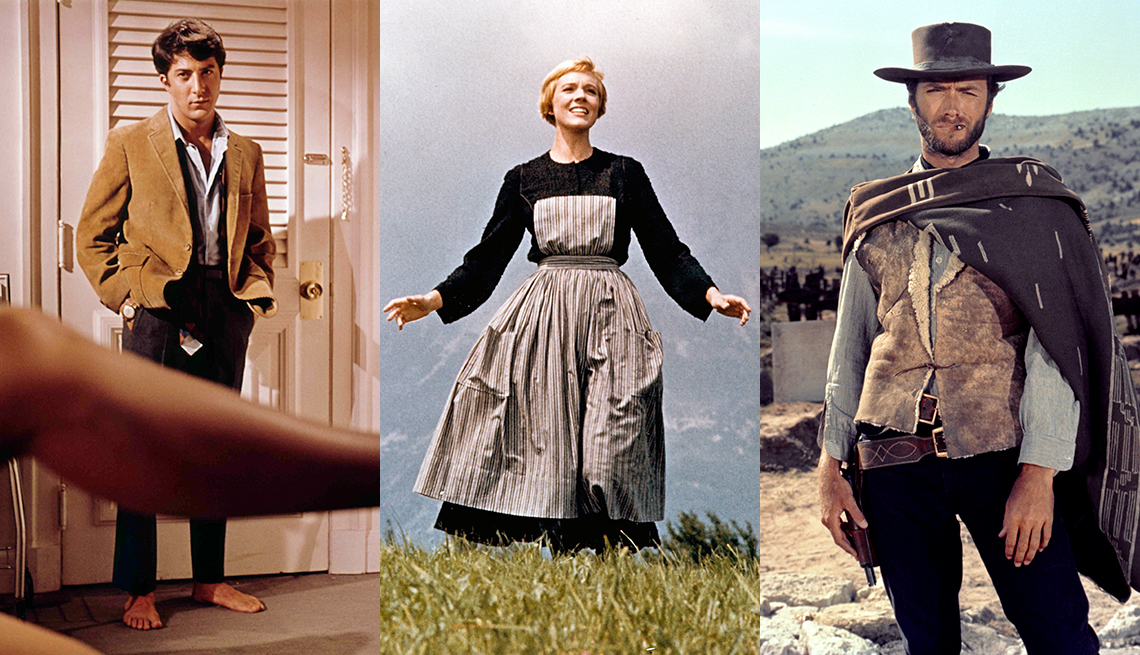The 1960s was a decade of profound cultural and social upheavals, and Hollywood cinema played a pivotal role in reflecting and shaping the era. From groundbreaking storytelling to the emergence of new cinematic techniques, the 1960s produced a wealth of iconic films that continue to captivate audiences to this day. In this extensive exploration, we delve into the top Hollywood movies of the 1960s, celebrating the creativity, innovation, and cultural impact of these cinematic masterpieces.
1. “Psycho” (1960) – Alfred Hitchcock’s Psychological Thriller
Alfred Hitchcock’s “Psycho” stands as a landmark in the thriller genre. Released in 1960, this cinematic masterpiece shattered conventions with its shocking narrative twists and groundbreaking use of suspense. The infamous shower scene, accompanied by Bernard Herrmann’s haunting score, has become an indelible part of cinematic history. “Psycho” remains a testament to Hitchcock’s prowess in manipulating audience expectations and emotions.
2. “Lawrence of Arabia” (1962) – Epic Adventure and Cinematic Spectacle
David Lean’s “Lawrence of Arabia” is a sprawling epic that captivated audiences with its grandeur and storytelling prowess. Released in 1962, the film follows the extraordinary journey of T.E. Lawrence, portrayed by Peter O’Toole, in the Arabian Desert during World War I. The sweeping landscapes, stunning cinematography, and O’Toole’s charismatic performance contributed to the film’s critical acclaim and multiple Academy Awards.
3. “To Kill a Mockingbird” (1962) – Harper Lee’s Tale on the Big Screen
Bringing Harper Lee’s literary classic to life, “To Kill a Mockingbird” (1962) directed by Robert Mulligan is a poignant exploration of racial injustice in the American South. Gregory Peck’s portrayal of Atticus Finch, a principled lawyer defending a black man accused of rape, earned him an Academy Award. The film’s enduring impact on social consciousness and its sensitive portrayal of racism make it a timeless work of cinematic art.
4. “Dr. Strangelove or: How I Learned to Stop Worrying and Love the Bomb” (1964) – Satirical Brilliance
Stanley Kubrick’s satirical masterpiece, “Dr. Strangelove,” released in 1964, is a darkly comedic exploration of nuclear war and political absurdity. The film’s unique blend of humor and existential dread remains unparalleled. Peter Sellers delivers a tour de force performance in multiple roles, and the iconic image of Slim Pickens riding an atomic bomb is etched into the annals of film history.
5. “The Sound of Music” (1965) – A Musical Extravaganza
Directed by Robert Wise, “The Sound of Music” is a musical triumph that continues to enchant audiences. Released in 1965, this Rodgers and Hammerstein adaptation stars Julie Andrews as Maria, a governess who brings joy and music to the von Trapp family. The film’s timeless songs, including “Do-Re-Mi” and “My Favorite Things,” coupled with breathtaking Austrian landscapes, contribute to its enduring appeal.
6. “The Good, the Bad and the Ugly” (1966) – Sergio Leone’s Spaghetti Western Epic
Sergio Leone’s “The Good, the Bad and the Ugly” is an iconic Spaghetti Western that solidified Clint Eastwood’s status as a cinematic legend. Released in 1966, the film is the third installment in Leone’s “Dollars Trilogy.” Ennio Morricone’s unforgettable score, coupled with Leone’s distinct visual style, elevates this tale of bounty hunters and buried gold to cult status.
7. “The Graduate” (1967) – Coming of Age in the Turbulent ’60s
Mike Nichols’ “The Graduate,” released in 1967, encapsulates the essence of the counterculture movement of the 1960s. Dustin Hoffman’s portrayal of Benjamin Braddock, a disenchanted college graduate navigating an affair with an older woman, resonated with a generation questioning societal norms. The film’s use of Simon & Garfunkel’s music and its exploration of generational angst contribute to its enduring cultural impact.
8. “2001: A Space Odyssey” (1968) – Stanley Kubrick’s Cosmic Odyssey
Stanley Kubrick’s visionary exploration of space and human evolution, “2001: A Space Odyssey,” released in 1968, remains a cinematic triumph. The film’s visual effects, philosophical themes, and its integration of classical music, particularly Richard Strauss’s “Also sprach Zarathustra,” redefined the science fiction genre. “2001” is a cinematic journey that challenges viewers to ponder the mysteries of existence.
9. “Rosemary’s Baby” (1968) – Polanski’s Psychological Horror
Roman Polanski’s “Rosemary’s Baby,” released in 1968, is a psychological horror film that explores themes of paranoia and the supernatural. Mia Farrow’s compelling performance as Rosemary, a woman suspicious of her pregnancy, anchors the film’s tension. “Rosemary’s Baby” is a chilling exploration of maternal anxiety and societal expectations.
10. “Butch Cassidy and the Sundance Kid” (1969) – Buddy Western Classic
Directed by George Roy Hill, “Butch Cassidy and the Sundance Kid” is a classic buddy Western that pairs Paul Newman and Robert Redford in iconic roles. Released in 1969, the film follows the exploits of the charismatic outlaws as they evade law enforcement. The film’s blend of humor, action, and the enduring charisma of its leads solidifies its status as a beloved cinematic classic.
Conclusion: A Decade of Cinematic Excellence
The 1960s were a transformative period in Hollywood, marked by a diverse array of cinematic gems that pushed boundaries, challenged conventions, and left an indelible mark on the industry. From the psychological thrills of “Psycho” to the cosmic odyssey of “2001: A Space Odyssey,” each film on this list represents a unique facet of the cinematic landscape during this iconic decade. As we continue to revisit these classics, their influence on storytelling, visual aesthetics, and cultural discourse remains as potent as ever, reminding us of the enduring power of cinema to shape and reflect the human experience.
